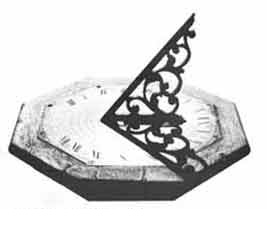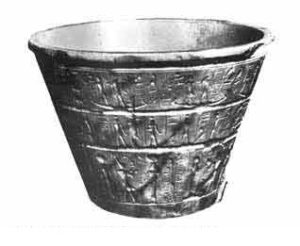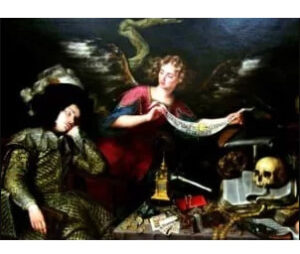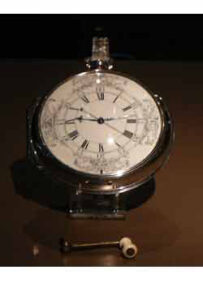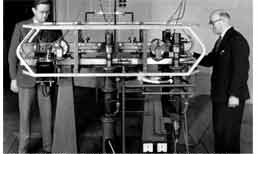History of clocks
A brief history of clocks, from past to present day
Early Time – Keepers
Part 1: Antiquity
The sundial
If we do not know exactly how many thousands of years ago someone first noticed that the shadow cast by a tree or even by himself pointed in a different direction at different times of day, we know that time was first calculated by the movement of the shadow, and that a stick in the ground was man’s first clock. Examples have been found in places as far apart as Rome and the territory of the Incas in South America. In ancient Greece, time was sometimes calculated by the length of shadow thrown by a column, and measured in terms of man’s steps. Thus, a character in Aristophane’s comedy „The Frogs”, says, ‘When the shadow is ten steps long, come to dinner’.
Ruins of monumental sun-clocks stand lonely across the earth. These include the rings of megalithic stones at Stonehenge on Salisbury Plain; the vast curved stones at Jaipur in India; the rock pillars in Peru; the Aztec calendar-clocks and the famous Egyptian obelisks, some of which cast their shadow round a dial marked in the earth, which is the apotheosis of man’s initial stick-in-the-ground-clock. An obelisk sundial of this sort and size was put up some centuries later by the Emperor Augustus in 27 BC on the Campus Martius in Rome, which tells the time there to this day.
However, sundials and sunclocks have one overwhelming fault; they are obviously of little use in cloudy weather and at night. Therefore, man had to invent a timepiece, which would be independent of the sun.
Water-clocks
A method of doing this was known in Egypt where time was measured by how much water had flowed out of a pot through a small hole. The use of water-clocks was wide-spread not only in Egypt, Syria, Babylon and Phoenicia, but all over that part of the world we now call Middle East. Small water-clocks were used in the Athenian Courts to limit the time a lawyer was allowed to speak. This led to those who filled the water-clocks being bribed by lawyers to fill only partially the container when rivals were pleading, and so reduce their opponents allotted time, and the same thing used to happen in Rome under Pompey. Yet water-clocks suffered from the same disadvantage as sun-clocks: they depended on the elements. In short, water-clocks were apt to freeze up in winter.
Yet another way of reckoning time was wastage, that is to say by discovering how long it took a candle, incense, or oil to burn away. A rather simple, though effective way of telling the time was used in medieval monasteries, when there was no other way of knowing the hour at night. Brother Austin would begin to read his Bible, and, after he had got through a specified number of previously timed pages, he would run to the belfry and ring the bell. He was in fact a monk-clock.
After centuries of time being measured by the methods listed above, man began to create and use weight-based clocks. Their mechanism works like a bucket well, but with adjustments so that the weights move sequentially and regularly.
A brief history of clocks – Part II
Early Domestic Clocks
The mechanical clock
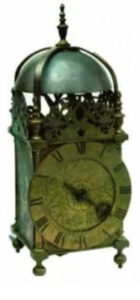
About 1500, in Italy, France and later South Germany, springs were being introduced into clocks in place of weights. The invention has been ascribed to Peter Heinlein of Nuremberg, but the idea is illustrated in Leonardo da Vinci’s note books, though it is not known whether he ever applied it practically. Due to the fact that spring-driven clocks are so compact (they can be put in any position and still keep going) their exteriors could become fantastic a blend of fact (time) and fantasy (artistic design)
Clocks as luxury items
Medieval clocks were luxuries, not the necessities they are now. Having to be „on time” to the minute for an appointment was not absolutely necessary until the railways and the demands of commerce made it so. Clocks were status symbols. Kings and princes and prelates had them and ambassadors used them both for themselves and as diplomatic presents. Yet, these early clocks, though a source of pride to their owners, were not particularly accurate. The ordinary sundials and sand-glasses were to be trusted more.
Increased interest in clocks dramatized in people’s minds the consequences of Time passing, which fascinated them; and brought about a demand for paintings composed of spent objects such as an emptied sand-glass, a skull, a burnt-out candle and a falling petal rose.
The most important discoveries in clock-making, as we shall realise, have been the use of weights and springs, the fusee and various escapements including the pendulum, the application of electricity, and of quartz crystals and atomic vibrations.
Pendulum clocks
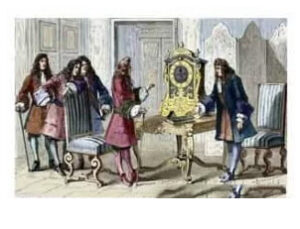
In 1583, Galileo Galilei, a student of eighteen, when watching the to-and-fro swing of a lamp on a long chain in Pisa Cathedral, thought that its movement might be a way of measuring time. From this idea he attempted to make a pendulum clock, but we are not sure he succeeded. However, in 1657, Christian Huygens, a Dutch scientist, turned into reality Galileo’s dream and revolutionized the clock-maker’s art by successfully applying the pendulum to clock work. In this way, accuracy was so much improved that minute hands became the rule, and soon second pointers were added. Thirteen years later, a considerable further step forward in accuracy came with the invention of the ‘anchor’ escapement, often attributed to Robert Hook but first met with in clocks by William Clement, a London maker of about 1670. From this moment on, clockmakers could think more about the looks. In the 18th century in France, clocks were elegant and exotic, sometimes even eccentric.
History of clocks – Part III
Science meets time
The Longitude problem
The position of a ship at sea can be determined so easily nowadays that it is hard to believe that 250 years ago it was impossible to know approximately. Due to the development of maritime trade and increasing number of trips of exploration in the 18th century, it became imperative that the vessels do not deviate from their course. The country who invented an instrument to easily calculate the global position would have a huge advantage over her commercial rivals and it all depended on the clocks.
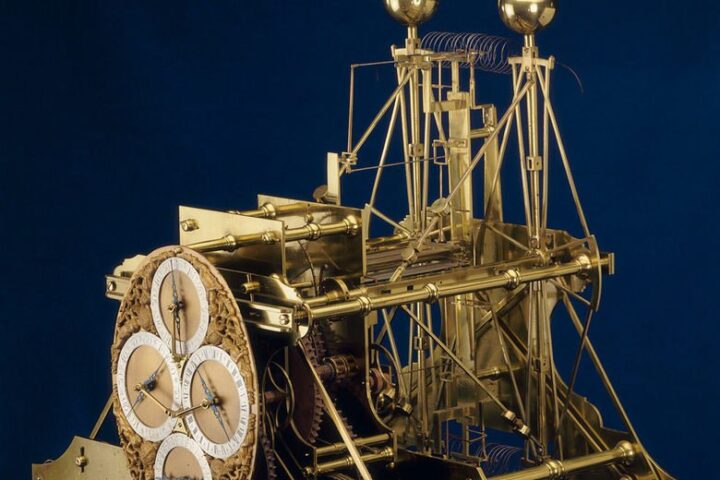
Around 1530, Dutch scientist Gemma Frisius argued that a reliable clock on board a vessel, set at home, say Greenwich or any other point and then comparing the sea shore as the sun at noon local time, with the clock, the difference between those two hours (calculating that one hour is 15 degrees West or East longitude) this way showing the exact position.
A race against time
However, in the 16th century, portable timepieces were not operating at sea. King Philip of Spain promised 100,000 crowns for a clock or a mechanism for finding longitude. Shortly thereafter, the Dutch government offers 10,000 florins and the King of France encouraged his clock-makers by all possible means. In 1659, Christian Huygens built a special pendulum clock which worked properly when the sea was calm, but was inefficient during storms.
H1
In 1714, the British Government offers £10,000 for a clock with an accuracy of 1 degree after a trip to India and back or £20,000 if the error was even smaller.
John Harrison of Yorkshire had dedicated all his life building timers and at age 35 had completed plans for a spring-based clock that would work in all weather conditions and went to London to win the prize at stake. There he meets the famous watchmaker George Graham, who recommends to go home and build his timer to see if it works, financing Harrison with £200. Over the next seven years, John Harrison experiments several models build after his schematics until he gets to a result he considered satisfactory, then returns to the capital.
His first timer named H1 will be used on a voyage to Lisbon and back. It had greater success than anyone had expected even if it was not perfect. He received £500 and was encouraged to continue his work. He did, but the following timers H2 and H3 could not be tested at sea due to the Anglo-Spanish War, the English government fearing the clocks would be captured.
H4
At the time the war ended, Harrison finished his famous H4 clock which was about 14 cm in diameter.
He was put aboard the HMS Deptford in 1761 on a trip to Jamaica and back. This happens 35 years from the first coming of Harrison in London. In this journey, William Harrison took care of clock created by his father.
H4 worked so well that the skeptical Longitude Council refused to believe the results, claiming that it was chance and refused to pay Harrison’s prize. Three years later H4 is tested again and it gives more accurate results. The Longitude Council gives reluctantly £5,000. After another successful journey, the clock maker receives another several thousand pounds but only after he sends a petition to King George III for the well-deserved reward.
John Harrison died in 1776 at age of 83. His clocks are now at the National Maritime Museum in Greenwich.
History of clocks – Last part
20th century
In 1927, J.W. Horton and Warren A. Morrison make a quartz watch. It has the size of a smaller room; today any watch or clock that runs on battery uses quartz crystal based movement. Quartz crystals or silica are often found in sand, that is used to create electronic components.
Currently we are using movements based on quartz like the clocks made by Be Clockwise. The most important feature is the piezoelectric effect of quartz. That is the vibration at a certain frequency that is converted into electricity by a microchip. It powers small motor that engages some wheels, they spin the hands and tell the time.
Quartz clocks have not brought with them the new definition of second and this because after long periods due to changes in temperature or impurity quartz crystal changes its oscillation frequency.
The history of the clock continues with atomic clocks. They are the most accurate time measuring instruments. If you try to pay attention to details and when we say details, we refer to atoms; even more attention to the cesium atom or rubidium, on which operates the most accurate clock in the world, we notice a second more or less in 138 million years…I do not remember, not that it matters that much for me.
